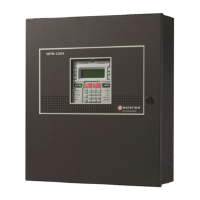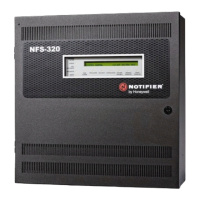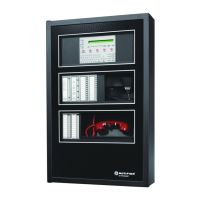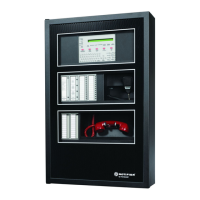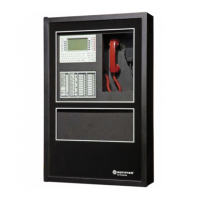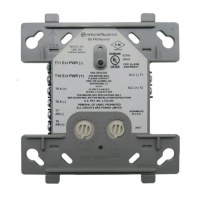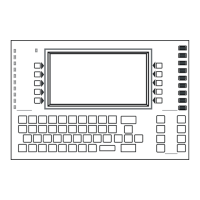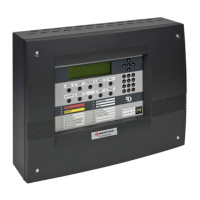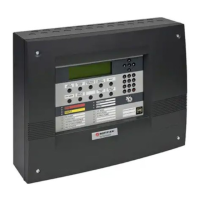82 NFW-50X Manual — P/N LS10129-001NF-E:C 7/25/2018
Programming Master Programming Level
Supervision Settings
Pressing 1 while viewing Ethernet Options Screen #2 will cause the display to toggle between the 4 super-
vision setting options. Toggle to select NFPA 2010 Sole Path, NFPA 2010 Dual Path, NFPA 2013 Sole
Path, or NFPA 2013 Dual Path. Refer to the table on page 46 for permissible settings.
The Supervision Interval is the time from the check-in at AlarmNet to the FACP. Select Dual Path when
Ethernet and Cellular communications will be used. Select Sole Path when only Ethernet or Cellular is
used.
• NFPA 2010 Dual Path: Supervision Interval: 24 Hours
• NFPA 2010 Sole Path: Supervision Interval: 5 min
• NFPA 2013 Dual Path: Supervision Interval: 6 Hours
• NFPA 2013 Sole Path: Supervision Interval: 1 Hour
Cellular
To configure the communication method to contact central station as a GSM/Cellular connection, select 3
for Cellular from the Comm Path Screen. The following screens will display. Note that a CELL-MOD or
CELL-CAB-N must be installed in the system to use this feature.
Enable
To enable the Ethernet connection, press 1 while viewing the Ethernet Options Screen #1 to change the display to Enabled Yes. Each
press of the 1 key will cause the display to toggle between Enabled Yes and Enabled No.
Central Station Account
Press 2 on Cellular Options Screen #1 to display the following:
Enter the City ID, Central Station ID, and Account Code all provided by the monitoring station.
Supervision Settings
Pressing 1 while viewing Ethernet Options Screen #2 will cause the display to toggle between the 4 super-
vision setting options. Toggle to select NFPA 2010 Sole Path, NFPA 2010 Dual Path, NFPA 2013 Sole
Path, or NFPA 2013 Dual Path. Refer to the table on page 46 for permissible settings.
The Supervision Interval is the time from the check-in at AlarmNet to the FACP. Select Dual Path when
Ethernet and
Cellular communications will be used. Select Sole Path when only Ethernet or Cellular is
used.
• NFPA 2010 Dual Path: Supervision Interval: 24 Hours
• NFPA 2010 Sole Path: Supervision Interval: 5 min
• NFPA 2013 Dual Path: Supervision Interval: 6 Hours
• NFPA 2013 Sole Path: Supervision Interval: 1 Hour
Trouble Report Limit (Dialer Runaway Prevention)
The Report Limit option limits the number of Communicator trouble calls to the Central Station, to a pro-
grammed amount between 0 and 99, for each unique trouble within a 24 hour period. Separate limit count-
ers keep track of each unique type of trouble. Note that the number of phone line (communication) faults
called to the Central Station are not limited by this feature. No subsequent restoral message is sent to the
Central Station(s) for a particular trouble whose call limit has been reached. Local communicator annuncia-
tion will still track the particular trouble and restoral.
ETHERNET OPTIONS
1=SUPV. SETTINGS
NFPA 2010 DUAL PATH
Ethernet Options Screen #2
NOTE: These supervision settings apply to both the Cellular settings and the Ethernet settings.
XXX COMM PATH
1=POTS
2=ETHERNET
3=CELLULAR
Comm Path Screen #1
CELLULAR OPTIONS
1=ENABLED NO
2=CS ACCOUNT
Cellular Options Screen #1
CELLULAR OPTIONS
1=SUPV. SETTINGS
NFPA 2010 DUAL PATH
Cellular Options Screen #2
CELLULAR OPTIONS
1=ENABLED NO
2=CS ACCOUNT
Cellular Options Screen #1
CS ACCOUNT
1=CITY ID 0000
2=CS ID 0000
3=ACCT CODE 000000
Central Station Account Screen
ETHERNET OPTIONS
1=SUPV. SETTINGS
NFPA 2010 DUAL PATH
Ethernet Options Screen #2
NOTE: These supervision settings apply to both the Cellular settings and the Ethernet settings.
COMMUNICATOR
1=PRI COMM PATH
2=SEC COMM PATH
3=TBL REPORT LIMIT 0
Communicator Screen #2
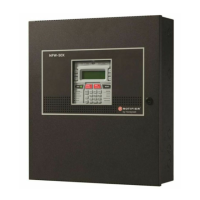
